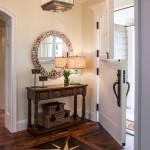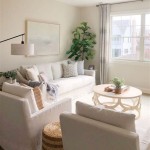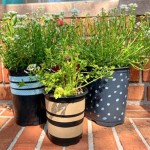How to Decorate a Small Studio Apartment in Taiwan
Decorating a small studio apartment in Taiwan presents unique challenges due to the often limited space and specific cultural nuances. Effective utilization of space, combined with considerations for climate and local availability of resources, are crucial for creating a comfortable and functional living environment. This article provides practical advice on decorating a small studio apartment in Taiwan, focusing on maximizing space, adapting to the environment, and creating a harmonious living space.
Maximizing Space and Functionality
The primary concern in decorating a small studio apartment is optimizing every available inch of space. This requires a strategic approach that prioritizes functionality and minimizes clutter. The use of multi-functional furniture and clever storage solutions is paramount.
Vertical storage is a highly effective technique. Tall bookshelves, reaching almost to the ceiling, can accommodate not only books but also decorative items, personal belongings, and even clothing in strategically placed storage boxes. Consider shelves that are adjustable to cater to various sized items. In Taiwanese apartments, where earthquakes are a concern, it is recommended to secure tall furniture to the wall to prevent tipping.
Multi-functional furniture is another essential component. A sofa bed serves as both a seating area and a sleeping space, freeing up valuable floor area. A coffee table with built-in storage can conceal remote controls, magazines, and other small items. Similarly, ottomans with lift-up lids provide additional seating and hidden storage for blankets or seasonal clothing. In Taiwan, consider opting for furniture made from durable materials that can withstand the humid climate.
Wall-mounted solutions are beneficial for decluttering floor space. Floating shelves create storage without occupying floor space, and wall-mounted desks provide a workspace that can be folded away when not in use. Consider installing a wall-mounted drying rack for laundry, as outdoor drying is common in Taiwan but not always feasible. Ensure that the wall-mounted fixtures are securely installed, taking into account the potential for seismic activity.
Mirrors are invaluable for visually expanding a small space. Strategically placing a large mirror on a wall can create the illusion of a larger room. Consider the placement carefully to reflect natural light and create a brighter and more open atmosphere. In Taiwanese culture, Feng Shui principles often guide the placement of mirrors; it’s advisable to research these principles to ensure the mirror’s placement is auspicious.
Rugs can define different zones within the studio apartment, separating the living area from the sleeping area or the kitchen. Choose rugs with patterns or colors that complement the overall decor and create a cohesive look. In Taiwan's humid climate, opt for rugs made from materials that are easy to clean and resistant to mold and mildew.
Finally, it is imperative to declutter regularly. Eliminating unnecessary items and adopting a minimalist approach can significantly improve the feeling of spaciousness. In Taiwan, many neighborhoods have regular recycling programs and donation centers, making it easier to dispose of unwanted items responsibly.
Adapting to the Taiwanese Climate and Culture
Taiwan's climate is subtropical, characterized by high humidity and temperatures throughout the year. This necessitates specific considerations when decorating and furnishing a small studio apartment.
Choosing the right materials is crucial. Avoid fabrics that trap moisture, such as heavy velvet or thick wool. Opt for breathable materials like cotton, linen, or synthetic fabrics that are resistant to mold and mildew. Furniture made from bamboo, rattan, or teak is well-suited to the climate, as these materials are durable and resistant to moisture damage. Leather furniture should be avoided if possible, as it can become sticky and uncomfortable in humid conditions.
Ventilation is paramount for preventing mold and mildew growth. Ensure that the apartment has adequate ventilation by opening windows regularly, especially after showering or cooking. Consider investing in a dehumidifier to reduce moisture levels in the air. Air conditioning is essential during the hot summer months, but it is important to maintain it regularly to prevent the buildup of mold and dust.
Window coverings play a significant role in regulating temperature and light. Blackout curtains can block out sunlight and heat during the summer, while sheer curtains provide privacy without completely blocking out natural light. Consider using roller blinds or shutters, which are easy to clean and maintain. In Taiwan, traditional bamboo blinds are still popular and offer a natural and aesthetically pleasing option.
When selecting paint, choose paints that are specifically formulated for humid environments. These paints contain additives that resist mold and mildew growth. Consider lighter colors, which reflect light and make the apartment feel brighter and more spacious. In Taiwanese culture, certain colors are considered auspicious, so it’s wise to research these colors before making a final decision.
Incorporating local elements can add a sense of authenticity and connection to the surroundings. Consider incorporating Taiwanese art, handicrafts, or textiles into the decor. Displaying local pottery, calligraphy, or traditional fabric prints can add character and cultural flair to the apartment. Visiting local markets and shops is a great way to find unique and affordable decorative items.
Finally, be mindful of noise pollution. Taiwan is a densely populated island, and noise levels can be high in urban areas. Consider using soundproofing materials, such as thick curtains or rugs, to reduce noise from outside. Earplugs can also be helpful, especially if the apartment is located near a busy street or construction site.
Creating a Harmonious and Personalized Space
While functionality and practicality are important, it is equally essential to create a space that feels comfortable, personalized, and reflects the individual's taste and personality.
Choosing a cohesive color palette is crucial for creating a sense of harmony. Select a limited number of colors that complement each other and use them throughout the apartment. Neutral colors, such as white, beige, or gray, can create a calming and spacious atmosphere. Accent colors can be added through accessories, such as cushions, rugs, or artwork. In Taiwanese culture, certain color combinations are considered lucky, so it is advisable to research these combinations before making a final decision.
Lighting plays a vital role in setting the mood and atmosphere of the apartment. Use a combination of ambient, task, and accent lighting to create a well-lit and inviting space. Ambient lighting provides overall illumination, while task lighting is used for specific activities, such as reading or cooking. Accent lighting highlights specific features, such as artwork or decorative items. In Taiwan, energy-efficient LED lighting is widely available and can help reduce electricity consumption.
Personalizing the space with artwork, photographs, and other personal belongings can make the apartment feel more like home. Displaying cherished memories and items that reflect the individual's interests and hobbies can create a sense of comfort and belonging. Be mindful of clutter and avoid overcrowding the space with too many items. Rotate items periodically to keep the decor fresh and interesting.
Plants can bring life and vibrancy to a small studio apartment. Choose plants that are well-suited to indoor environments and require minimal maintenance. Consider using hanging baskets or shelves to display plants without taking up valuable floor space. In Taiwanese culture, certain plants are considered lucky and are often used in home decor. For example, orchids are a popular choice and symbolize prosperity and good fortune.
Creating a defined workspace is essential for those who work from home. Designate a specific area for work and equip it with a comfortable chair, a desk, and adequate lighting. Keep the workspace organized and free from clutter to promote focus and productivity. A small screen or room divider can help separate the workspace from the living area, creating a sense of privacy and separation.
Finally, prioritize comfort and relaxation. Create a cozy and inviting seating area with comfortable cushions and throws. Add personal touches that make the space feel welcoming and relaxing. A small studio apartment can be a comfortable and stylish living space with careful planning and attention to detail. By maximizing space, adapting to the environment, and personalizing the decor, it is possible to create a harmonious and functional home in Taiwan.

Micro Apartment By Nestspace Design In Taiwan Fits Everything Within 23 Sqm

22m2 Apartment In Taiwan A Little Design Archdaily

Small Multi Purpose Apartment Design In Taipei Taiwan

Feminine One Room Apartment By Awork Design Studio Interiorzine

Taiwanese Studio A Little Design Creates 17 6 Square Metre Micro Flat In Taiwan

Tiny Apartment In Taiwan Expands Upwards For Space Saving And Optimization

22m2 Apartment In Taiwan A Little Design Archdaily

50 Small Studio Apartment Design Ideas 2025 Modern Tiny Clever

Micro Apartment By Nestspace Design In Taiwan Fits Everything Within 23 Sqm

Micro Apartment With Space Saving Furniture By A Little Design Interiorzine
Related Posts







